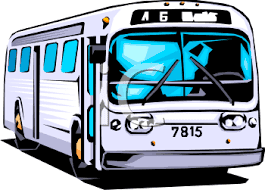When we have lived a large part of our adult lives without major disabilities, encountering restrictions on everyday activities, like jumping in the car and going, can be very hard to accept. And developing the mindset for smoothly seeking alternatives may not come quickly or easily. But in the end, I (gladly) keep finding that almost every problem has multiple solution options – if we approach the search with an open mind.
This month I learned about an interesting conference being held in a neighboring county. I wanted to attend, but my usual (intra-county) transportation options could not be used to get there. After some frustration, sadness and anger (“Why don’t these people think about disabled transit riders?”) I set out to look for solutions. Of course, one option would be to ask a friend or family member to drive me there, but they have responsibilities and obligations that can make being my “chauffer” problematic too. I believe that most of us want to remain as independently functional as possible. I wanted to do this myself!
I set up a spreadsheet on which I wrote possible choices and then I started searching on the internet and making phone calls.
As you would expect, public transit is the least expensive but most time consuming and challenging. Private ‘Black Car” limo services are the most expensive but quickest and easiest. And other options fell in the middle.
Based on a (one-way) trip of 21 miles from home to conference venue
| Cost | Time | notes | ||
| A | Personal Car | $ 12.14 est. | 29 minutes | This doesn’t factor in the costs to the family member driver |
| B | Ridesharing service (Uber / Lyft) | $ 29.00 | 35 minutes | Not currently available for wheelchairs |
| C | ||||
| D | “Black Car Service” | $ 144.00 | 29 minutes | |
| E | Private Paratransit | $ 83.00 | 29 minutes | |
| F | Airport Shuttle
(shared ride) |
$ 49.00 | 90+ minutes | Two rides. requires transferring at the airport |
| G | My paratransit +
Their paratransit |
Not currently available | ||
| H | My transit +
Their paratransit |
$ 5.10 | 90+ minutes | Two rides. requires transferring at their transit center |
| I | My transit +
Their transit |
$ 3.10 | 140+ minutes | Three rides. requires transferring at their transit center and one bus stop. |
(“My transit=my local buses, Their transit=neighboring county’s buses, My paratransit=paratransit vans from my local transit agency, Their paratransit= neighboring county’s paratransit van)
In the end, I chose option “H” because, while more cumbersome to use than private direct servies (3 times longer in time plus switching vehicles once), the cost savings is significant (94-96% savings).
What did I learn from this exercise?
- * Start planning as early as you can – As I researched options I learned that my neighboring county has a reciprocity program with my own county’s paratransit system, but to take advantage of it requires phone calls, faxes, follow-up and time. In the end approvals came through in time for my needs!
- * Be open minded. Sometimes the best answer is “some of this and some of that”. In this case, no one provider looked perfect, but by combining options, a reasonable solution was found.
- * Stay calm and as cheerful as possible. It is easy to feel defeated by these challenging situations. But I have found that maintaining a friendly, polite approach brings out that same attitude from the transit agency staff. Often these contacts have volunteered ideas and support I didn’t know existed.
I wish you all the best in finding your best “ways”!
 Transit = Fixed route public transportation that operate on set schedules. Depending on the area this can be buses, trolleys or trains. Currently most municipal transit systems in the US are accessible for disabled riders. However, access to and from transit vehicles (sidewalks, etc.) can be more unpredictable.
Transit = Fixed route public transportation that operate on set schedules. Depending on the area this can be buses, trolleys or trains. Currently most municipal transit systems in the US are accessible for disabled riders. However, access to and from transit vehicles (sidewalks, etc.) can be more unpredictable.
 Paratransit = Transportation service that supplements larger public transit systems by providing individualized rides without fixed routes or timetables. Many municipalities offer schedulable paratransit services specifically for disabled riders
Paratransit = Transportation service that supplements larger public transit systems by providing individualized rides without fixed routes or timetables. Many municipalities offer schedulable paratransit services specifically for disabled riders

 This website is designed to give you practical tips, advice and links that will support your journey to seek out the solutions that work best for you.
This website is designed to give you practical tips, advice and links that will support your journey to seek out the solutions that work best for you.